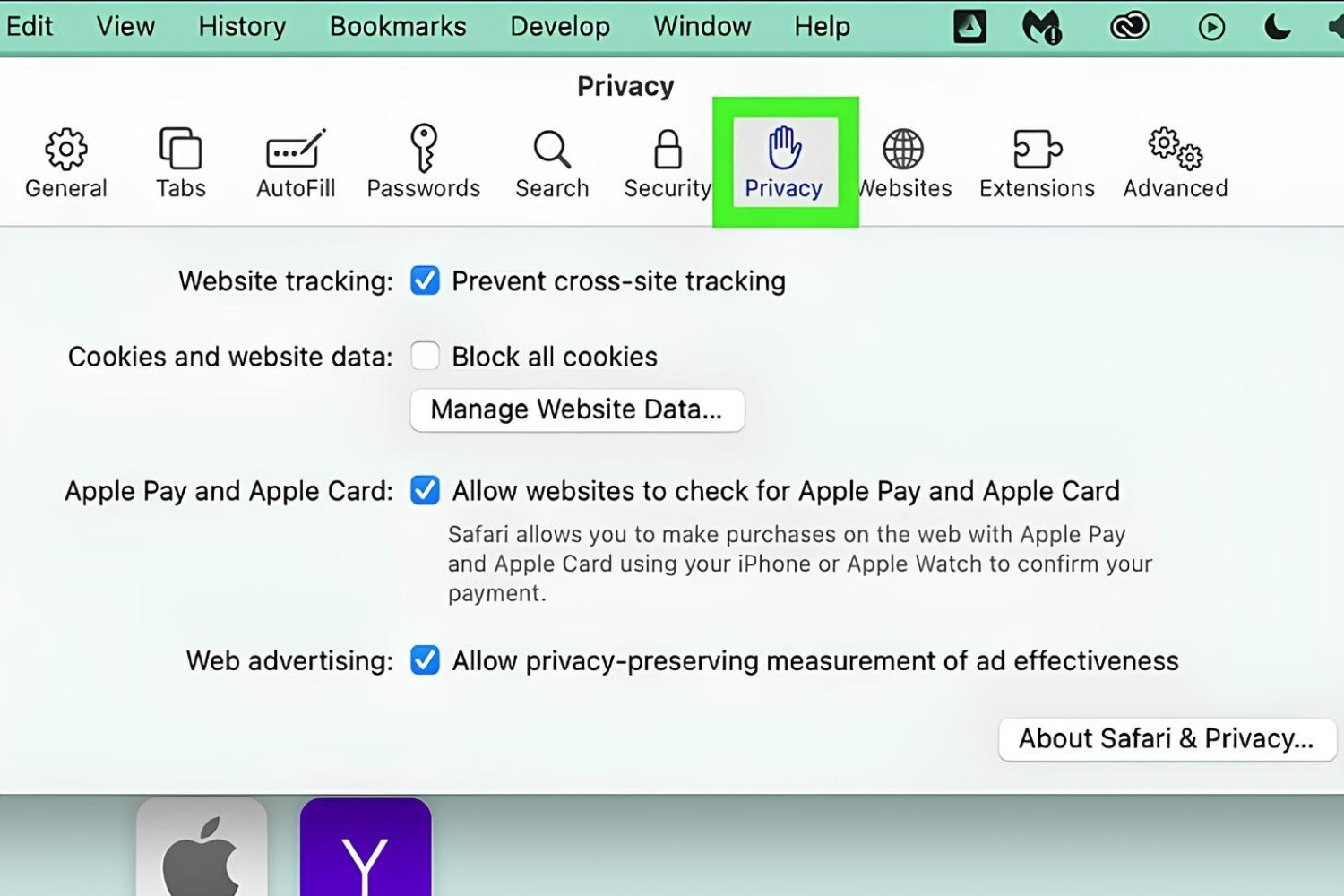Introduction
Safari, Apple's native web browser, is renowned for its sleek interface, robust performance, and seamless integration with the Apple ecosystem. Whether you're using Safari on your iPhone, iPad, or Mac, accessing and customizing the browser's settings can greatly enhance your browsing experience. From adjusting privacy and security preferences to fine-tuning the appearance and behavior of the browser, Safari offers a plethora of settings to cater to diverse user preferences.
In this comprehensive guide, we'll delve into the intricacies of Safari settings, providing step-by-step instructions for accessing and customizing settings on both iOS devices and Mac computers. Whether you're a tech-savvy user seeking to optimize Safari for maximum efficiency or a casual browser looking to personalize your browsing experience, this guide will equip you with the knowledge and tools to navigate Safari's settings with confidence.
So, whether you're eager to explore the advanced settings that empower you to take control of your browsing experience or simply want to tweak a few basic preferences, this guide will serve as your compass through the myriad of options available in Safari. Let's embark on this journey to uncover the hidden gems within Safari's settings, empowering you to tailor your browsing experience to your unique needs and preferences.
Accessing Safari Settings on iOS
Accessing Safari settings on your iOS device is a straightforward process that allows you to customize various aspects of your browsing experience. To access Safari settings on iOS, follow these simple steps:
-
Open Settings: Begin by unlocking your iOS device and locating the "Settings" app on your home screen. The Settings app is represented by a gear icon and serves as the central hub for customizing various system and app settings.
-
Navigate to Safari Settings: Scroll through the list of options in the Settings app and locate "Safari." Tap on the Safari option to access the browser's specific settings.
-
Explore Safari Settings: Upon entering the Safari settings, you'll be presented with a range of customization options, including General, Privacy & Security, and Advanced settings. Each category offers a unique set of preferences that allow you to tailor Safari to your specific needs.
-
Customize Preferences: Within the Safari settings, you can customize preferences such as search engine selection, default browser behavior, content blockers, and privacy settings. Additionally, you can manage website data, enable or disable pop-ups, and fine-tune the browser's appearance and functionality.
-
Return to Safari: Once you've adjusted the settings to your liking, simply exit the Settings app and launch Safari to experience the impact of your customizations.
Accessing Safari settings on iOS empowers you to personalize your browsing experience, enhance privacy and security, and optimize the browser's performance to align with your preferences. By familiarizing yourself with the various settings available, you can harness the full potential of Safari on your iOS device, ensuring a seamless and tailored browsing experience.
Accessing Safari Settings on Mac
Accessing Safari settings on your Mac allows you to fine-tune the browser to suit your browsing habits and preferences. Whether you're looking to enhance privacy and security, customize the appearance of the browser, or optimize its performance, Safari's settings offer a wealth of options to cater to your needs. To access Safari settings on your Mac, follow these simple steps:
-
Launch Safari: Begin by opening the Safari browser on your Mac. You can find the Safari icon in the Dock, or you can locate it in the Applications folder.
-
Access Preferences: With Safari open, navigate to the top-left corner of the screen and click on "Safari" in the menu bar. A drop-down menu will appear, and you should select "Preferences" from the list. Alternatively, you can use the keyboard shortcut "Command + ," to access the Preferences window.
-
Explore Safari Preferences: Upon selecting Preferences, a new window will open, presenting you with a range of tabs representing different categories of settings. These tabs include General, AutoFill, Passwords, Search, Privacy, Security, Extensions, and Advanced, each offering specific customization options.
-
Customize Preferences: Within the Preferences window, you can customize various aspects of Safari to align with your preferences. For instance, under the General tab, you can set your homepage, adjust the default search engine, and configure tab settings. The Privacy and Security tabs allow you to manage website tracking, block pop-up windows, and enable fraudulent website warnings, enhancing your online security.
-
Explore Advanced Settings: For users seeking more advanced customization options, the Advanced tab within Safari Preferences offers additional settings such as website data management, accessibility options, and experimental features.
-
Apply Changes: After customizing the settings to your liking, simply close the Preferences window to apply the changes. Your adjustments will take effect the next time you use Safari, allowing you to experience a browsing environment tailored to your preferences.
Accessing Safari settings on your Mac empowers you to personalize your browsing experience, safeguard your privacy, and optimize the browser's functionality. By familiarizing yourself with the diverse range of settings available, you can harness the full potential of Safari on your Mac, ensuring a seamless and tailored browsing experience.
Common Settings in Safari
Safari, Apple's native web browser, offers a range of common settings that allow users to personalize their browsing experience and optimize the browser's functionality. These settings, accessible on both iOS devices and Mac computers, encompass fundamental preferences that cater to the diverse needs of users. By familiarizing yourself with these common settings, you can tailor Safari to align with your browsing habits and preferences.
General Settings
Under the General settings in Safari, users can customize essential aspects of their browsing experience. This includes setting the browser's homepage, configuring the default search engine, and adjusting tab behavior. By defining a preferred homepage, users can streamline their browsing routine by ensuring quick access to their desired landing page upon launching Safari. Additionally, the ability to select a default search engine empowers users to personalize their search experience, aligning with their preferred search provider. Furthermore, the tab settings allow users to specify how new tabs are opened, providing flexibility in managing multiple webpages within the browser.
Privacy & Security Settings
Privacy and security are paramount in today's digital landscape, and Safari's settings offer robust features to safeguard users' online activities. Within the Privacy & Security settings, users can manage website tracking, block pop-up windows, enable fraudulent website warnings, and configure cookie preferences. These features empower users to protect their privacy, mitigate intrusive tracking, and enhance their online security while browsing the web. By customizing these settings, users can exert greater control over their digital footprint and fortify their browsing experience against potential threats.
Appearance Settings
Safari's appearance settings allow users to personalize the visual aspects of the browser to suit their preferences. This includes options to customize the browser's toolbar, adjust the font and color settings, and enable the Favorites bar for quick access to frequently visited websites. By tailoring the appearance settings, users can create a browsing environment that resonates with their aesthetic preferences and enhances the overall visual experience.
Content Settings
Content settings in Safari encompass preferences related to website content, including the handling of plug-ins, notifications, and location services. Users can manage how websites utilize plug-ins such as Adobe Flash, control notification permissions, and configure location access for websites. These settings provide users with granular control over the content they encounter while browsing, ensuring a tailored and streamlined interaction with web-based resources.
By exploring and customizing these common settings in Safari, users can optimize their browsing experience, enhance privacy and security, and create a personalized environment that aligns with their unique preferences and habits. Whether it's fine-tuning the appearance of the browser, fortifying online security, or streamlining content interactions, Safari's common settings empower users to tailor their browsing experience to their liking.
Advanced Settings in Safari
The advanced settings in Safari encompass a diverse array of customization options that cater to users seeking more granular control over their browsing experience. These settings, available on both iOS devices and Mac computers, empower users to delve deeper into Safari's functionality, experiment with cutting-edge features, and fine-tune the browser to align with their specific requirements.
Experimental Features
Within the Advanced settings, Safari offers access to experimental features that provide users with a glimpse into the browser's upcoming capabilities. These experimental features, often in the form of beta functionalities, allow users to test and provide feedback on potential enhancements to Safari. By enabling experimental features, users can explore cutting-edge technologies and contribute to the evolution of Safari, shaping the future of web browsing on Apple devices.
Website Data Management
Safari's advanced settings also include robust controls for managing website data, offering users the ability to view and manage stored website data, including cookies, cache, and local storage. This level of granularity enables users to selectively clear data from specific websites, manage website permissions, and maintain a streamlined browsing environment. By exercising control over website data, users can optimize Safari's performance, enhance privacy, and manage their digital footprint with precision.
Accessibility Options
For users with specific accessibility needs, Safari's advanced settings encompass a range of options to enhance the browsing experience. These options include customizing text size and encoding, enabling caret browsing, and configuring keyboard shortcuts for seamless navigation. By leveraging these accessibility options, users can tailor Safari to accommodate their individual needs, ensuring a more inclusive and user-friendly browsing experience.
Proactive Anti-Tracking
Safari's advanced settings also feature proactive anti-tracking measures that mitigate cross-site tracking and enhance user privacy. By leveraging intelligent tracking prevention, Safari offers users a proactive defense against invasive tracking techniques employed by advertisers and other entities. This feature underscores Apple's commitment to prioritizing user privacy and security, empowering users to browse the web with confidence and peace of mind.
Develop Menu
Advanced users and web developers can leverage Safari's Develop menu, accessible through the advanced settings, to access a suite of powerful tools for web development and debugging. From inspecting web elements and monitoring network activity to simulating various devices and user agents, the Develop menu equips users with the resources to analyze and optimize web content with precision. This feature-rich toolkit positions Safari as a formidable platform for web development and testing, catering to the needs of developers and tech enthusiasts.
By exploring and harnessing the advanced settings in Safari, users can unlock a wealth of capabilities that transcend conventional browsing preferences. Whether it's embracing cutting-edge features, managing website data with precision, or leveraging powerful tools for web development, Safari's advanced settings empower users to tailor their browsing experience with finesse and sophistication.

























